With the Grosvenor House Hotel gone and building underway, Sheffield’s New Retail Quarter is finally happening. The original ‘Sevenstone’ scheme ground to a halt when the developer Hammersons (who had also bought up all the property) lost interest in the project, but not before Trafalgar Works and Kangaroo Works had been demolished in preparation.
Rather than wait for what could be a very long time for another developer to take an interest, Sheffield Council set up an investment fund and bought up all the buildings that Hammersons had for £55 million. An architect firm from Nottingham, Leonard Design Architects, was paid to come up with a new design, and Queensberry was eventually chosen as the marketing agent to work in partnership with Sheffield Council.
Work on phase 1 at the Grosvenor site will involve the creation of more office space than shop space, in a huge building mostly to be used by HSBC bank. The council is hopeful that all those extra people in the city centre will do some shopping and help put some life into the city centre out of office hours. The two images below give an impression of the sheer scale involved here. Images in this article have been taken from the planning documents.
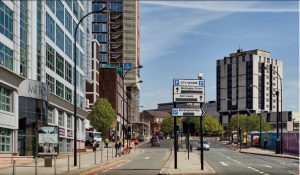
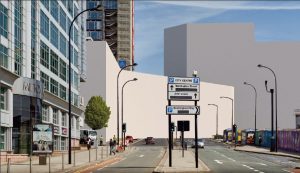
The second phase of the development, – which Sheffield Council has already given itself outline planning permission for, involves widespread devastation of Sheffield City Centre’s historic buildings. The plans have been heavily criticised by SAVE Britain’s Heritage, The Victorian Society, Historic England and Sheffield’s own Conservation Advisory Group.
Historic England is the government body giving planning advice on built heritage. Due to politics and a reduction in funds and staff, HE is more ‘developer friendly’ these days than English Heritage used to be, and would think very carefully before objecting to such a major development. Yet the objections were staunch and full. You can read them here (scroll through the pages using the inline viewer) in a letter that is very tricky to find on the council’s planning portal!
[pdf-embedder url=”http://www.hhbs.org.uk/wp-content/uploads/2017/06/HE-substantive-objections-oct15.pdf” title=”HE substantive objections oct15″]
For all Historic England’s protestations, they were still ignored by Sheffield Council. ‘Sheffield Council’ in the widest sense here – councillors, senior officers, planning officers and members of the planning committee (Labour and Lib-dem). It is hard to avoid the conclusion that successive Sheffield councils have undervalued the city’s architectural heritage. Clearly there is a complicated balancing act of priorities and a legacy of huge debts that Sheffield Council have added to considerably in order to get this far, however the scale too often seems to balance towards financial needs and away from preserving what most of us value and find of interest.
Which buildings are under threat?
This article touches upon some, but not all of the buildings under threat and more information will follow.
All of the red brick buildings in the foreground of the photograph below have had approval in principle to be demolished, with the exception we are told of the part of the ‘Pepperpot’ that can be seen on the far right of this photo fronting onto Pinstone Street. [Edit > that said, the building currently underway on the site of the Grosvenor does not seem to necessitate demolition of the Victorian buildings to the rear of the Pepperpot, something that earlier visuals suggested. Perhaps there is still some hope for these. That is the point of this article really – there have been some fans of the Grosvenor buildings, but for most of us, the bigger question will be around what happens at the next stage of development. Plans can change and that is what many of us are hoping for.]
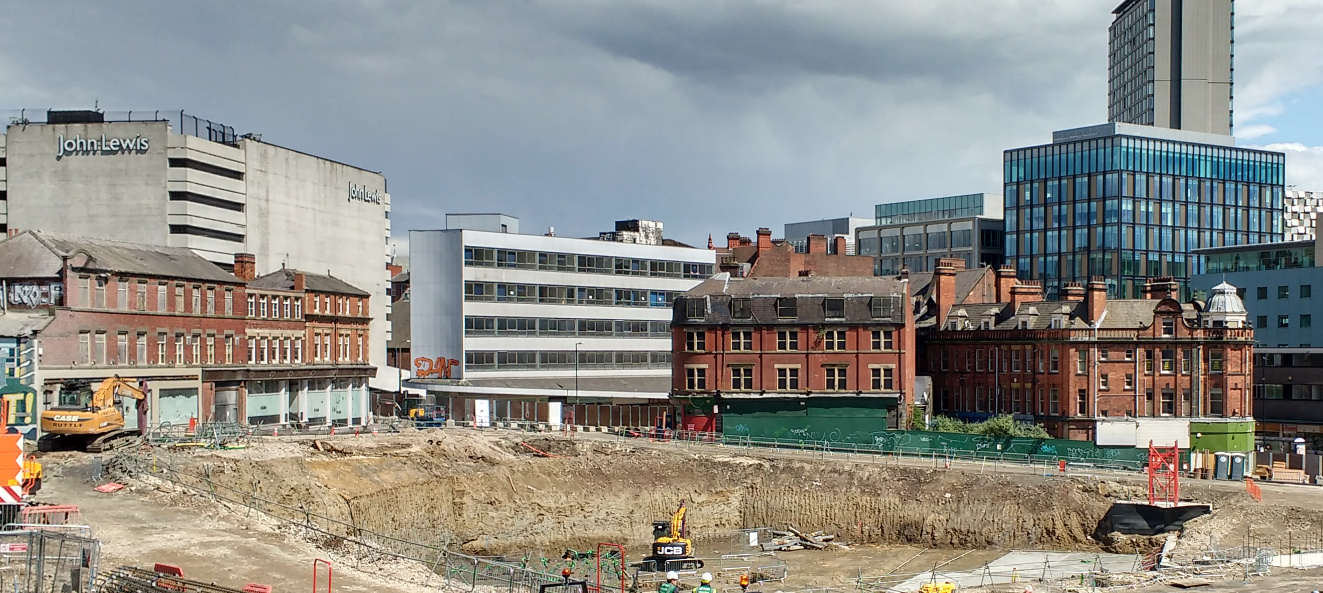
Henry’s Bar, and in fact most of Cambridge Street will be lost if the outline planning application that was approved is followed through on.

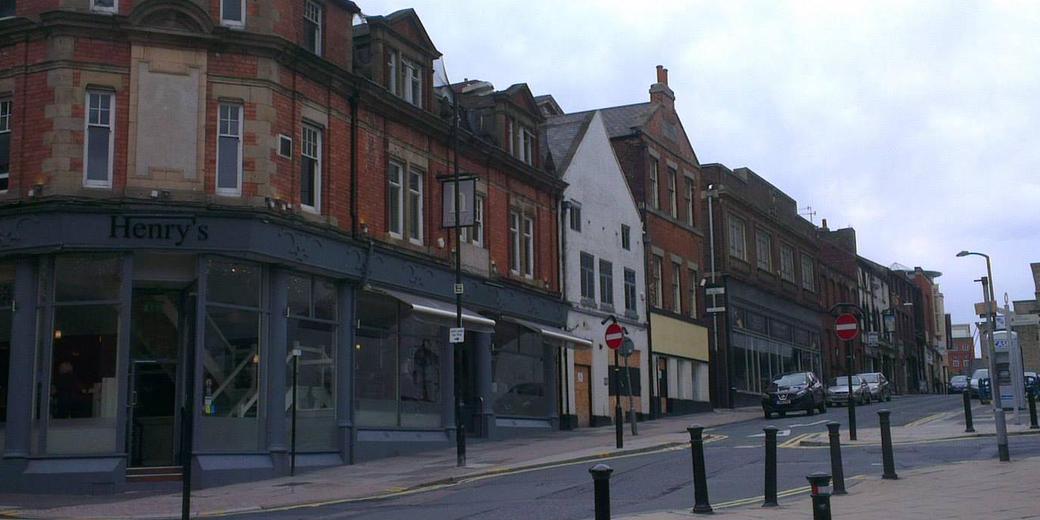
All that we know is safe in the above photo is the frontage of Grade II Listed Bethel Sunday School (not the whole building, just the front bit, shown here with yellow band above the front door..) and Leah’s Yard.. currently covered in scaffolding to hold the front in place..
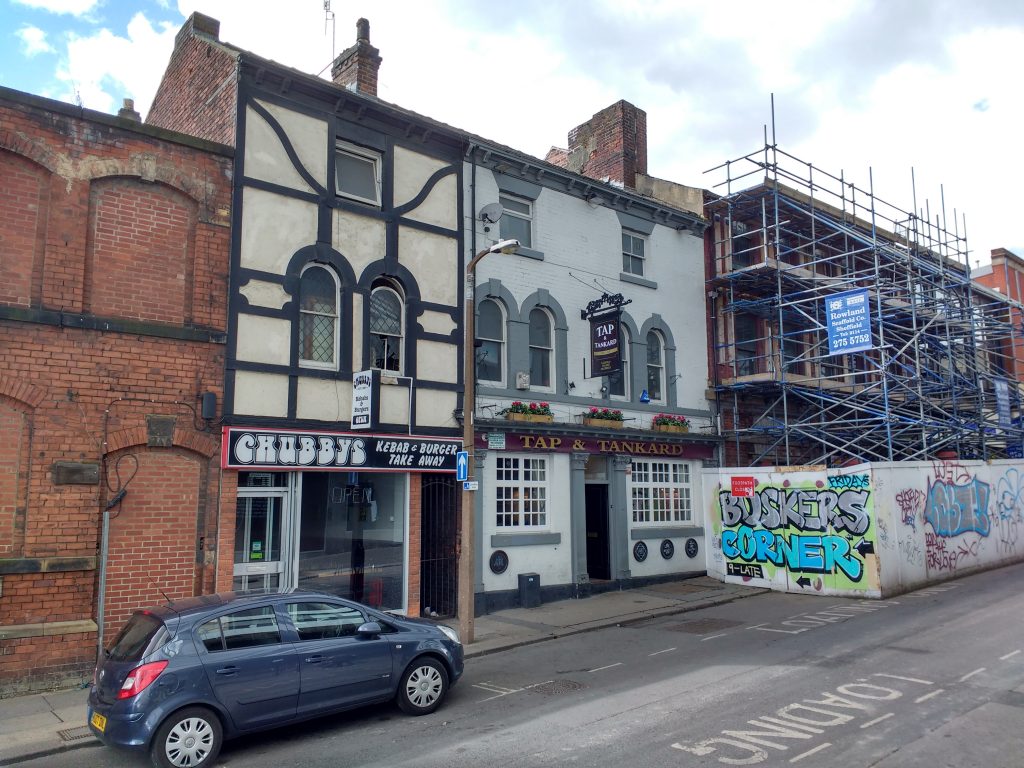
Leah’s Yard is a gem of Sheffield architectural and industrial heritage – Grade II star listed, the buildings have been rotting away and on Historic England’s Heritage at risk register for many years.
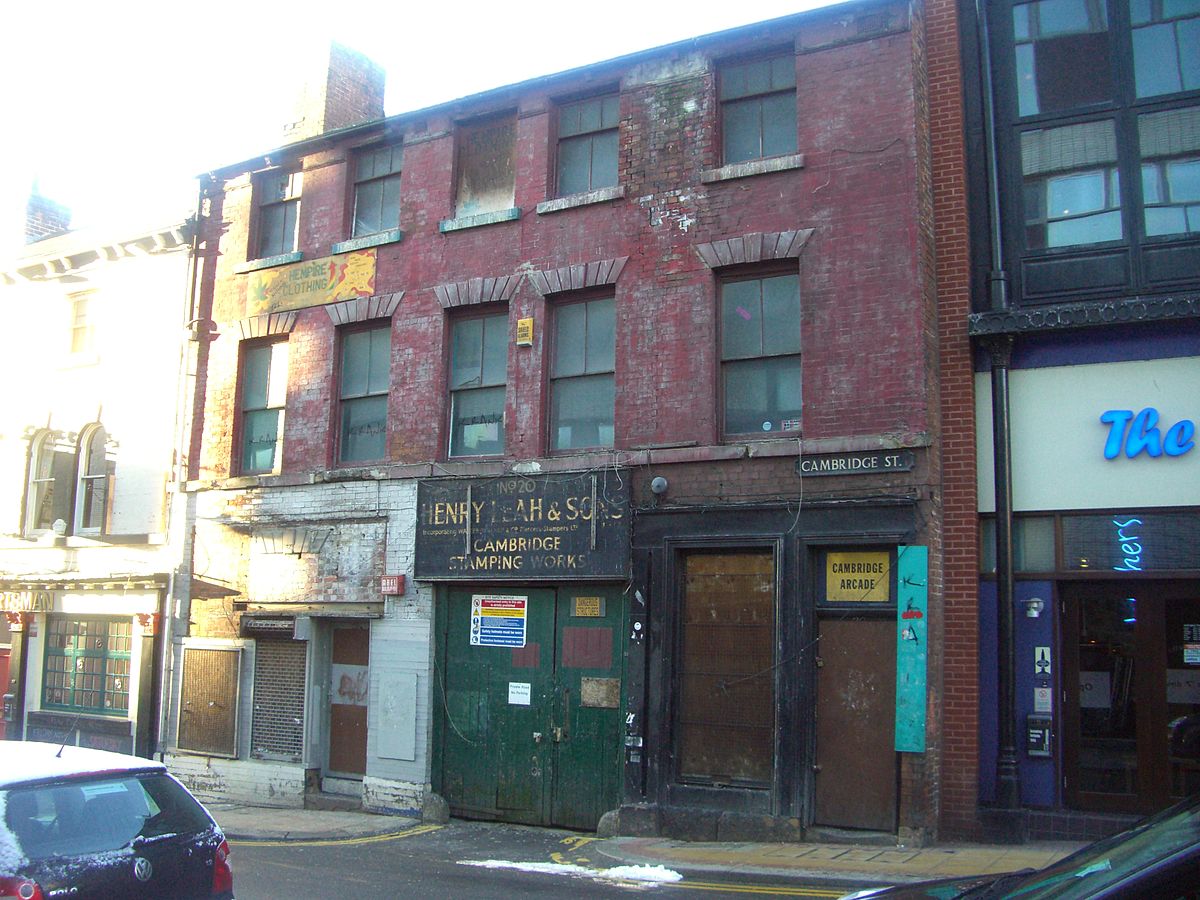
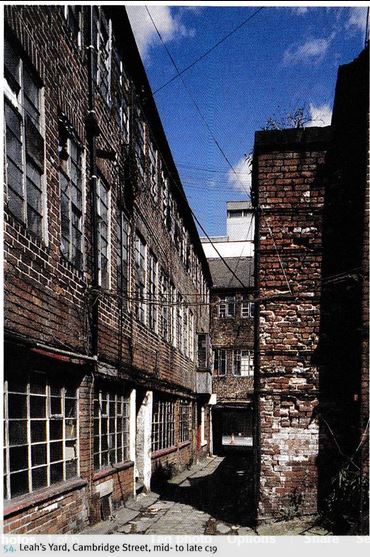
Behind the dilapidated doors lies a complex of ‘little mesters’ metal working workshops, noted in Pevsner.
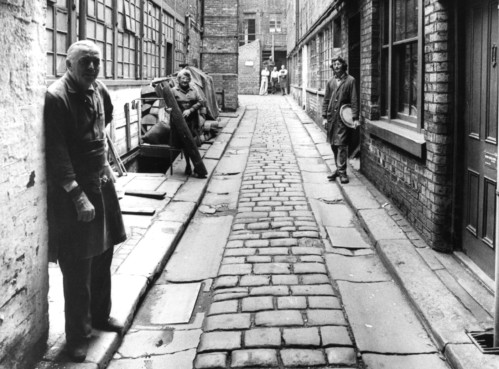
Being so much at the heart of the city, Leah’s Yard would be the perfect place to celebrate Sheffield’s rich industrial heritage. Some presence at the site from Museums Sheffield and Sheffield Industrial Museums Trust as part of the wider development would add real interest and attract tourists who might otherwise think twice about visiting a modern shopping complex. Demonstrations and heritage interpretation could fit alongside food outlets and coffee shops. All that the current ‘vision’ for Leah’s Yard can manage is a plan for the units to be used solely as coffee shops and food outlets. And why not independent shops in there too?
Historic England has argued that at the very least, the Tap and Tankard pub (previously the Sportsman) needs to be retained alongside Leah’s Yard to preserve a setting in which to appreciate the building. The council has other plans and wishes to cut a new road right through Cambridge Street, over the site of the Tap and Tankard and shaving past Leah’s Yard, itself looking completely isolated and out of context on this cgi.
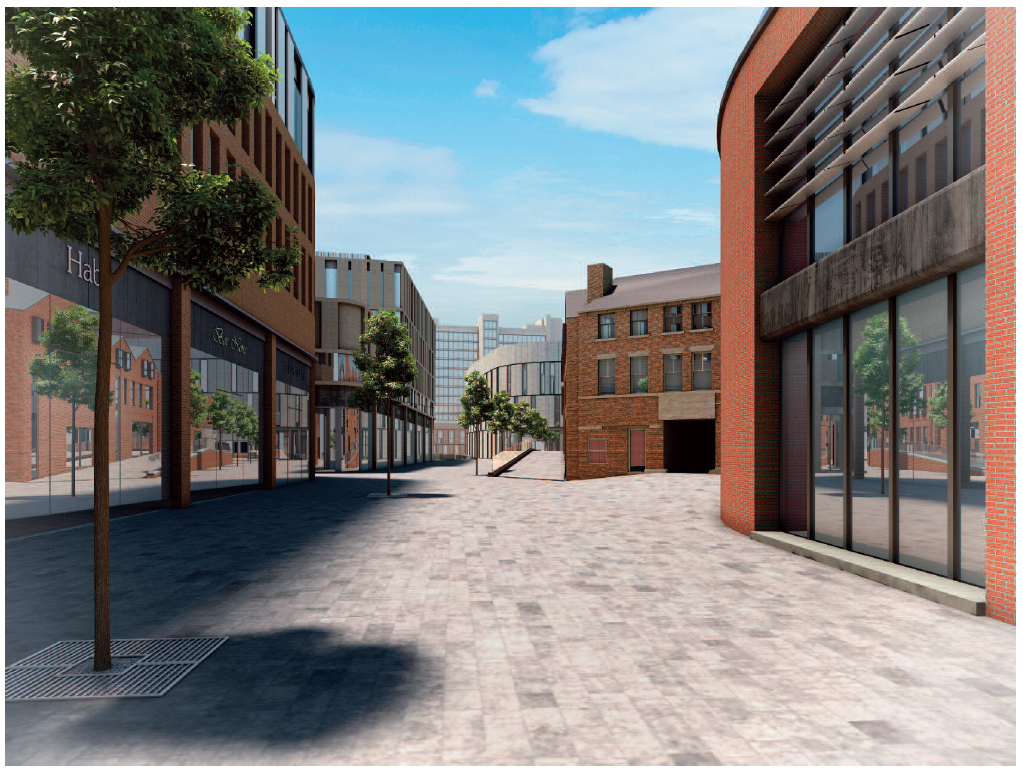
It is hard to get your bearings with the various images contained in the planning application as they don’t look much like what you can see now. On the above drawing we are looking up the brand new pedestrianised ‘New/Upper Fargate’. The road would plough diagonally across the site of present John Lewis. What we see in the distance on the above cgi is the proposed new anchor store. For ‘anchor store’ read John Lewis. So far John Lewis has made no commitment to this scheme. It’s an odd thing that a whole outline planning application, involving much loss and harm to heritage assets, has been approved on the basis of a relocation which so far we don’t know is going to take place.
Bizarrely the justification that is offered for so much loss and damage to heritage in the area (including basically all of Cambridge Street, apart from listed buildings that would be too difficult to demolish) is that ‘line of sight’ needs to be maintained to the proposed new anchor store.
Here is another mock up view looking down Cambridge Street.
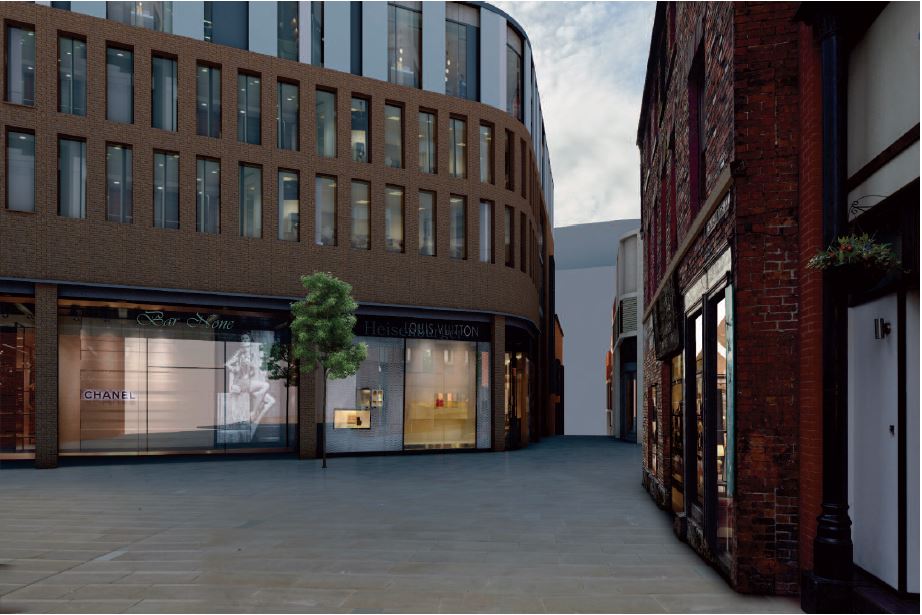
As you can see, ‘Cambridge Street’ will be eradicated – it will become an alleyway. Here is another view looking up – you might notice the frontage of Grade II listed Bethel Sunday School, squashed in halfway up the steps.
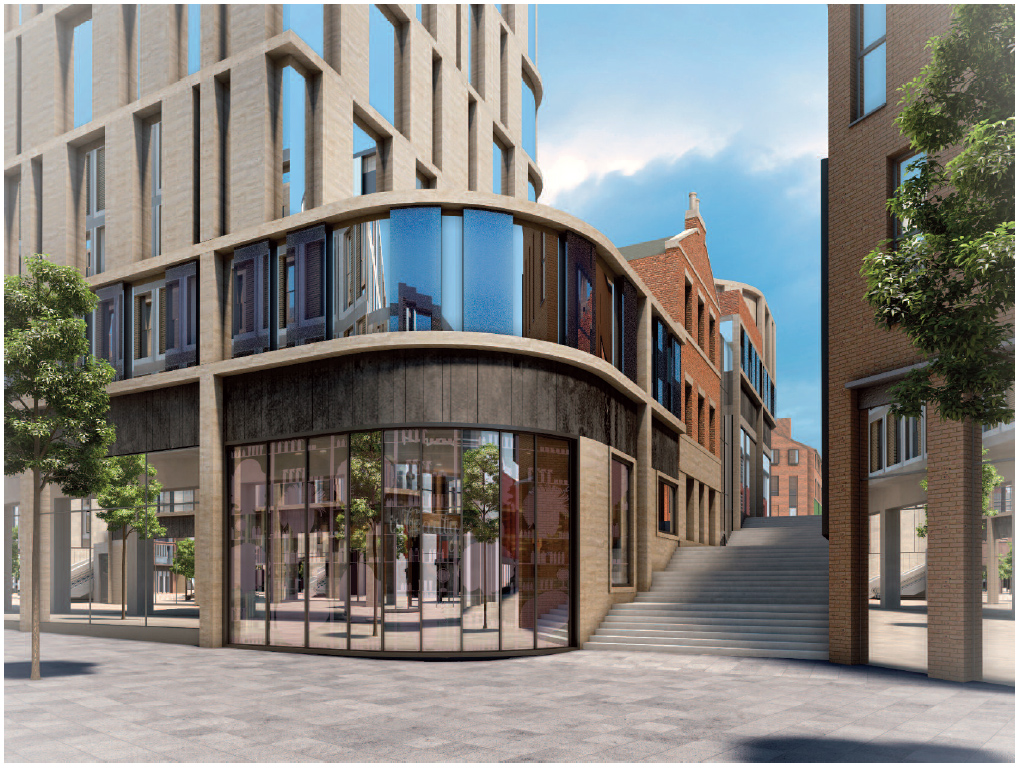
Which would you prefer – the above view or this one? – :
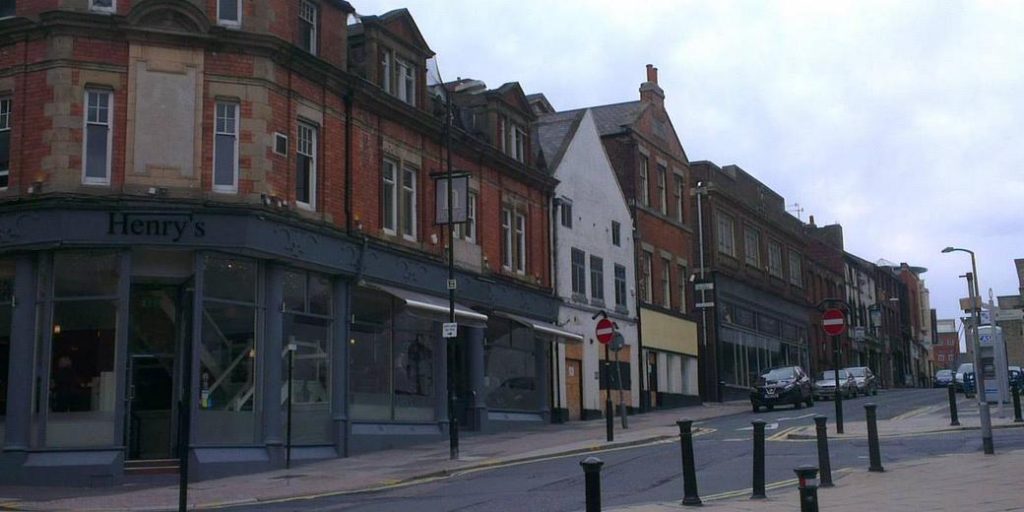
There are three ‘lines of sight’ to the proposed anchor store which are cited as justification for loss of heritage assets.
In the case of ‘Upper Fargate’, mentioned above, there is (allegedly..) a line of sight from Marks and Spencer on Fargate up ‘New Fargate’ to the proposed new site in the distance. It seems a far fetched requirement – could you really see the new store from outside Marks and Spencers’ and if you could would that really make so much difference? Some insiders have implied that this particular requirement was as a stipulation of John Lewis, others wonder if the truth might be a little more complicated.
As well as the line of sight demanded up the new Fargate from Marks and Spencer, lines of sight up Charles Street and Cross Burgess Street are also given as justifications for the loss of Henry’s Bar in the planning application.
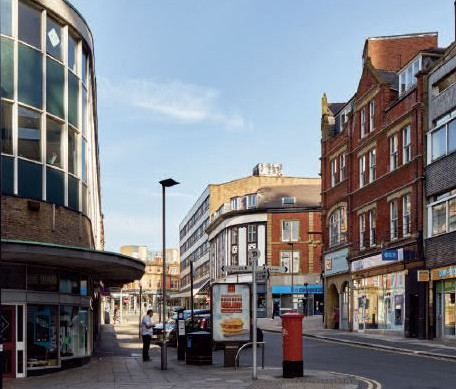
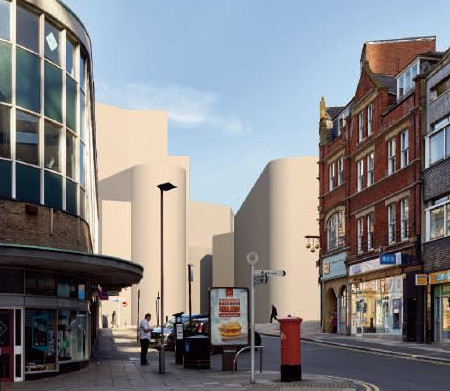
As you can see, the old Athol Hotel, with its distinctive mock Tudor cladding, is also destined to go.
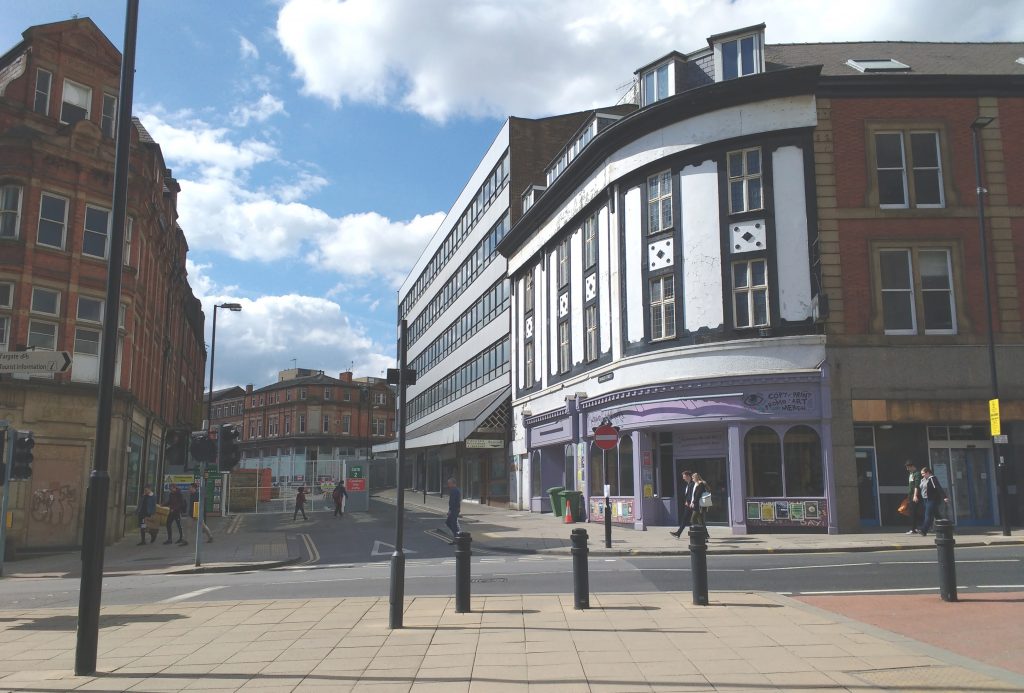
Looking at the old photograph below, this would be a great shame for beneath the mock Tudor cladding is a fine looking building waiting to be restored.

The proposed view up Cross Burgess Street and down Pinstone Street is hardly inspiring either. Again, it is claimed that the characterful Henry’s building must be eradicated so that there is a clear view of the anchor store beyond it.
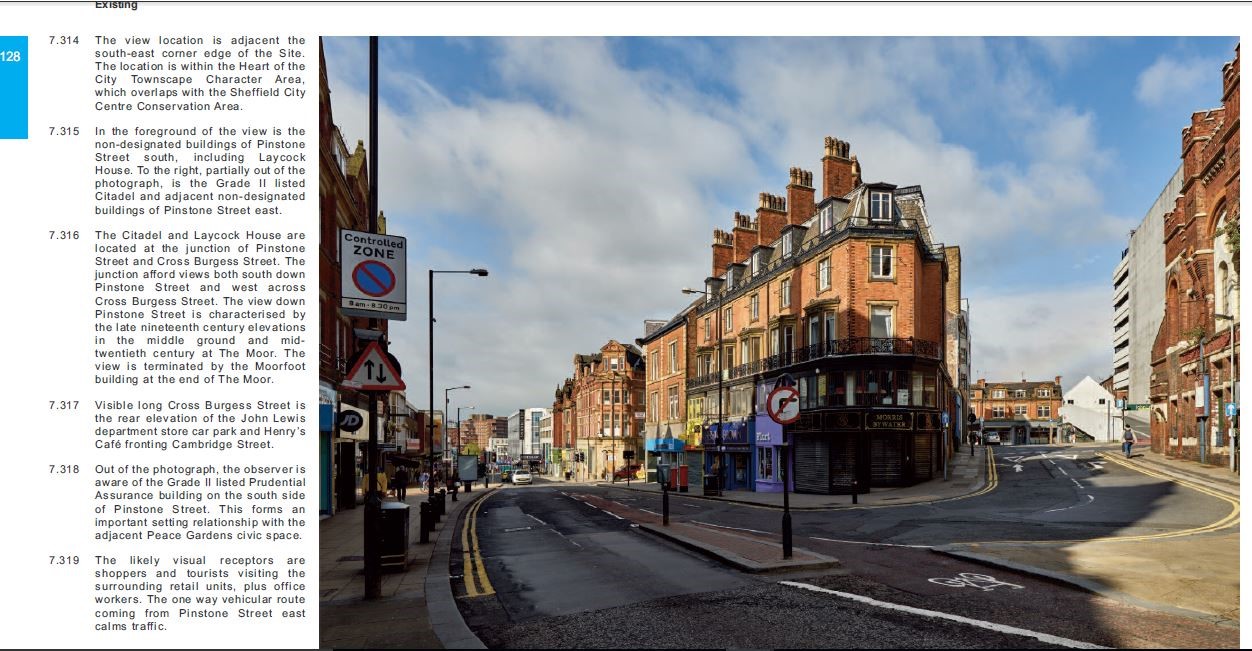

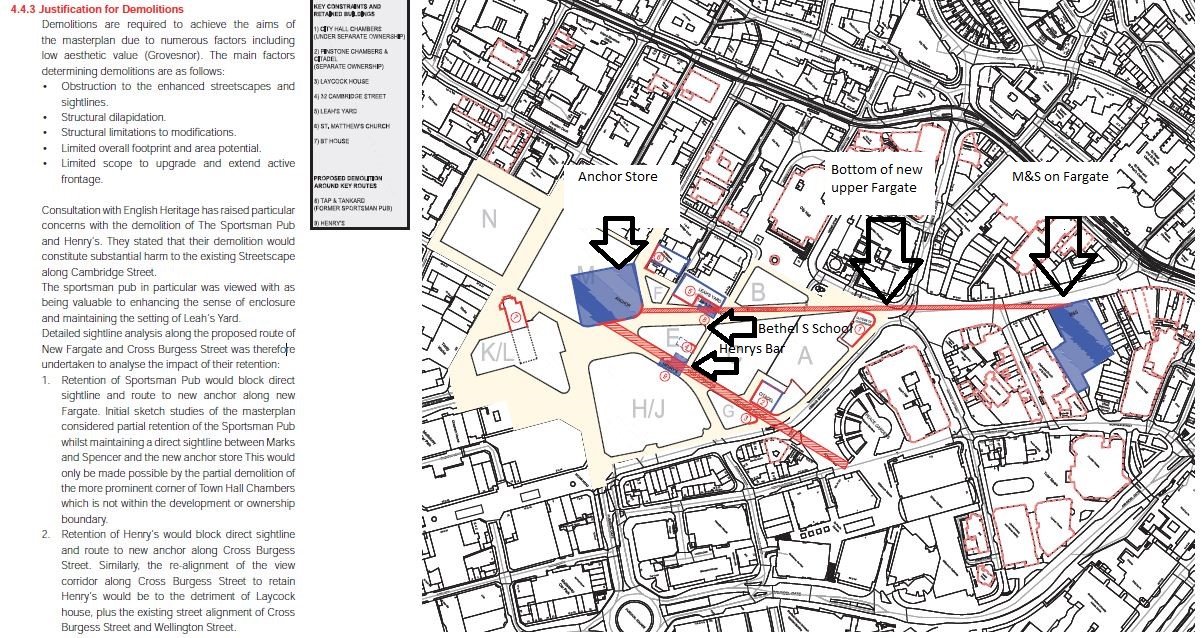
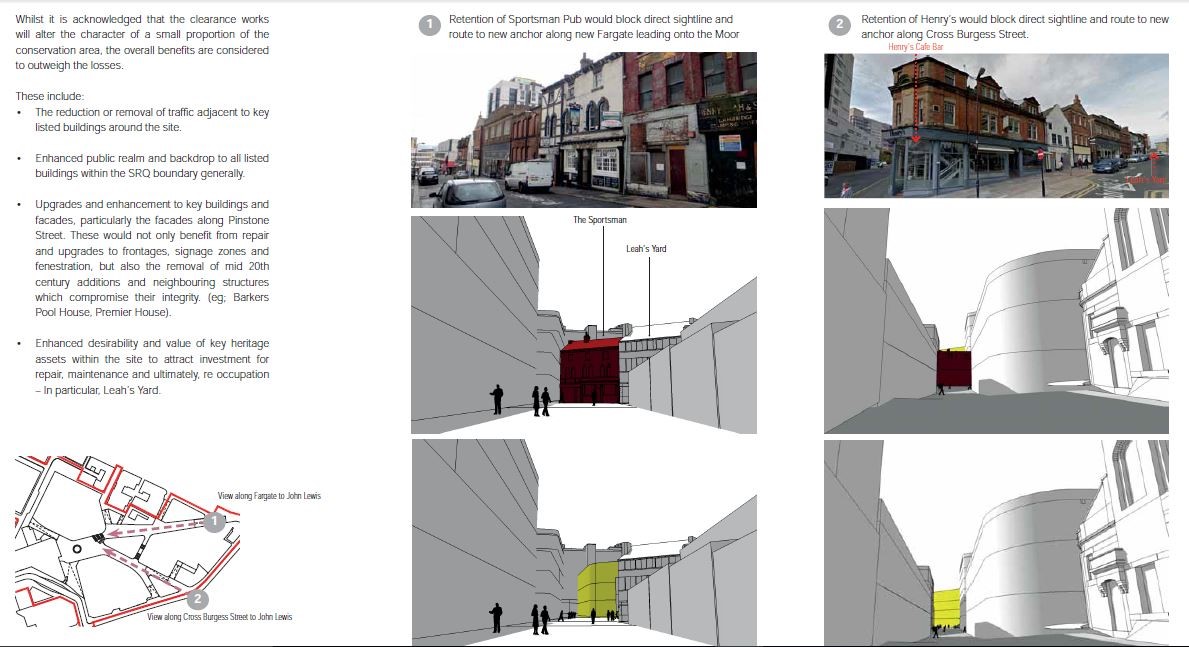
To be continued…
This is just another example of “lets make our city look nondescript” it could be anywhere in the country. There will be no buildings left for visitors to come and see what Sheffield was like. The only buildings will be the same as every other city in the UK, glass and concrete. I have nothing against new buildings but to destroy our heritage for what is no more than monetary gain for a few is disgusting. The council will say they are “improving” Sheffield but how long will it be before these buildings are empty, HSBC may not stay if they find cheaper alternatives abroad and we will be left with more empty buildings. The latest example of council planning, the new market on the Moor, is turning out to be more of a folly than anything of actual use. Pretty enough from the outside but with very little inside compared to our old “run down” market which had many more and varied stalls. The current market has limited food offerings and more hair and nail bars than you can count. How soon before this too is empty? We need a more eclectic mix of shops not huge conglomerates making their demands on what we should have. Don’t even get me started on the Central Library issue or this comment could turn into something the length of War and Peace.
Labour “not for the few, but for the many” It’s about time they started living up to these words.
This all puts me in mind of my home town of Stockton on Tees which historically had a fabulous row of Georgian shops and historic inns in its broad High Street. Circa 1970 (at the height of the Poulson era … hint, hint) it was demolished completely in favour of a soulless modern conglomeration. Keep on the case all you people with knowledge and passion and energy and don’t let the past be swallowed up by ‘progress’!
So many interesting and characterful buildings in Sheffield that could be sympathetically renovated and put to good use, as they are in so many other major cities. Shame on you Sheffield council. More of our history destroyed.
What is the economic gain here? It better be pretty dam good for the huge loss of heritage involved. Appalling.
The Council seem hell bent on eradicating anything with character in favour of nondescript modern retail outlets that we don’t need, offering no real benefit to the local economy as most profit will be disappearing out of the city. Small bonus in terms of jobs for bored sales assistants, promoted-in managers and parking attendants. No opportunity for small businesses, independents, people who care about the city, it’s just a case of who has the biggest wad of cash. With Meadowhall expansion and IKEA landing the city centre is dead anyway, so why bother?
Didn`t they do enough destruction in the 50`s of the REAL Sheffield.
The plans are just awful and once again the council are nibbling away at our heritage until nothing is left. Does Sheffield really need a new shopping quarter? Just take a look at fargate, it is turning into a real eyesore with shops closing and then reopening as bargain basement shops. Sheffield Council should take a look round Bradford to see the damage a new shopping centre can do. Beautiful old buildings left to rot. Thank god a council like ours didn’t take over York, imagine that…..an opening in the shambles so a new shop could be seen. This is our heritage and this is our city. We should fight to save our buildings because once they are gone they are gone and the faceless awful buildings that they throw up will need replacing in 40 years.